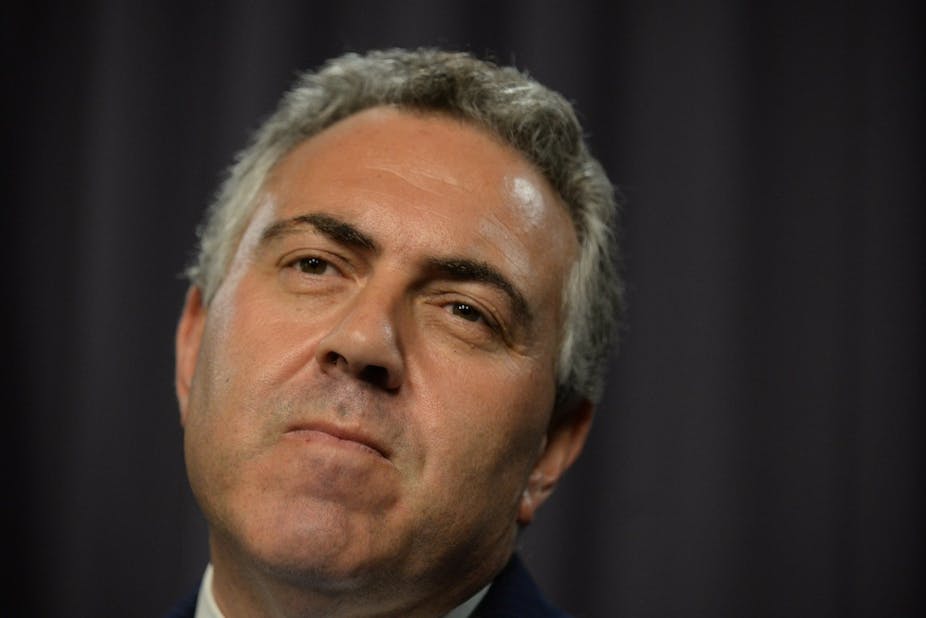As the 2014-15 budget nears, Australians are hearing that the government must mount an urgent repair job to address the looming structural crisis that will see the budget in deficit for decades to come. The “budget crisis” is a convenient narrative - but how true is it?
In the final piece in our series, James Morley, Professor of Economics and Associate Dean (Research) at the Australian School of Business argues responding to a manufactured fiscal crisis may mean we miss other economic opportunities.
In the mid 1990s, the Wall Street Journal ran an editorial with the headline “Bankrupt Canada”. Ratings agencies had recently downgraded Canadian government debt and the WSJ editorial pondered whether Canada would need to be rescued by the International Monetary Fund.
Soon afterwards, the Liberal government of the day put Canada’s fiscal house in order with deep spending cuts and more mild tax increases. Less than a decade later, Canada’s triple-A rating was restored and today it remains a top fiscal performer with a public debt-to-GDP ratio under 40% compared to its peak at 68% in 1996.
Jumping across the Pacific and fast-forwarding in time, it would seem that Australia now faces a similar existential debt crisis to Canada’s in the 1990s, at least according to the Liberal government of the day here.
But Australians could be forgiven for wondering “what crisis?” in light of a triple-A rating on government debt and a public debt-to-GDP ratio under 20%. Indeed, the IMF’s recent country report for Australia explicitly states, “Australia’s modest public debt gives the authorities scope to delay their planned return to surpluses”. Unlike with the Canadian fiscal crisis in the mid 1990s, no mention has been made of Australia needing to be rescued by the IMF.
Very Serious People
So what’s going on with all of this talk of a budget crisis? It appears that Prime Minister Tony Abbott and his treasurer Joe Hockey are suffering from what Nobel Prize winner Paul Krugman calls “VSP” Syndrome. This label diagnoses a tendency for “very serious people” in policy circles to burnish their economic credentials by proposing tough policies, even when these policies do more harm than good. Tony Abbott and Joe Hockey clearly want to demonstrate their economic courage by making big cuts to spending in order to save Australia from a debt crisis. The lack of an actual crisis is only a mild inconvenience in this narrative.
Now, other very serious people are going to read this and assume I’m foolishly ignoring the looming demographic crisis faced by all major industrialised economies, with dependency ratios set to balloon in coming decades and our ability to fund social services at currently-promised levels becoming increasingly difficult. But I’m not ignoring these long-term problems. At some point, entitlements will have to be cut back.
However, broad cuts to spending now and a temporary crisis levy are not long-term solutions to a demographic crisis. They are simply a way for a government to achieve a temporary surplus at all costs. The temporary nature of the so-called “crisis levy” is as clear an indication as possible that the government’s proposed policies are not really about long-term solutions.
Opportunity Lost
The unemployment rate in Australia has been slowly rising over the past couple of years. Given stable inflation, this has led the RBA to cut interest rates and keep them low. But the RBA is no doubt worried about the influence of low interest rates on house prices. In an ideal world, they would like to raise rates back to a more neutral level.
But we are not in an ideal world. Indeed, a manufactured fiscal crisis that produces big spending cuts and a temporary crisis levy (which, for fun, I will resist calling a “tax”) will put pressure on the RBA to keep interest rates lower for longer as they try to help the Australian economy adjust to the post-mining-boom era. But this loose monetary policy risks increasing imbalances in the housing market, which could lead to a real bona fide financial crisis in the future when house prices stop increasing and household debt becomes more expensive to service.
The real cost of borrowing is unusually low right now. This won’t last forever. And when it ends, it will lead to a difficult period of adjustment for Australians holding a lot of debt tied to short-term interest rates. But the current low real interest rates provide an opportunity for governments to borrow at long maturities to finance public infrastructure.
So if Tony Abbott and Joe Hockey really want to burnish their economic credentials, they should stop wishing there was a Greek-style fiscal crisis to address and instead act on an unusually good opportunity for long-term investment in infrastructure at low real interest rates. The stimulative effects of this temporary increase in spending would also allow the RBA to return short-term interest rates to a more neutral level and diminish the risk of a future financial crisis based on a housing bubble.
Alas, however, I fear “crisis envy” will carry the day when Joe Hockey delivers the budget and we will have yet another example of VSP Syndrome to point to. It will be an opportunity lost for both fiscal and monetary policy in Australia.
Further reading:
Australia’s economy is healthy, so how can there be a budget crisis?
A fiscal crisis? It’s about political priorities and neglected choices

